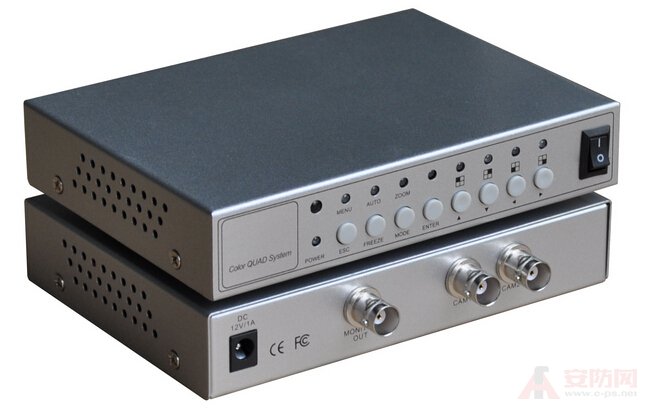The screen splitter can display images of 4, 9, and 16 cameras simultaneously on a single monitor, or can be sent to a recorder for recording. This article introduces the functions and performance characteristics of the screen splitter. The role of the picture splitter In a large-scale closed-circuit television surveillance system, the number of cameras is as many as several hundred, but the number of monitors is much smaller than the number of cameras. And too many monitors are not conducive to a full patrol of duty personnel. In order to achieve panoramic monitoring, that is, all camera signals can be displayed on the monitor screen, a multi-screen splitter is required. This device combines multiple video signals into one output and inputs one monitor so that multiple images can be displayed simultaneously on the screen. It not only reduces the number of monitors, but also enables the monitor to monitor the situation at various points at a glance. The division method often has 4 screens, 9 screens, and 16 screens. Multi-screen splitter allows simultaneous viewing of multiple camera signals on a single monitor, and it can simultaneously record multiple video signals with a single recorder. Some of the better multi-picture splitters also have a single-channel playback function, that is, any one of the multi-channel video signals that can be simultaneously recorded can be placed on the monitor. Picture splitter performance: 1. Fully compressed image, digitally processed color/black and white picture splitter; 2, four (or nine, sixteen) video input with four (or nine, sixteen) ring output; 3, built-in adjustable time sequence switcher and independent switching output. According to the camera number, the full-screen picture is switched in order, and the display time of the sensitive road picture can be optimized and programmed by the user. 4. High resolution and real-time update rate. The picture index is 512 × 512 pixels, and the update rate is 25-30 fields/second; 5. When the tape is played back, it can realize 1/4 (or 1/9, 1/16) screen to full screen zoom (revert to real-time full screen); 6. Compatible with standard SUPER-VHS recorders (some also have S-VHS interface); 7. There is an alarm input and output interface, which can be linked with the alarm system. When the alarm is activated, the full screen screen can be called and an alarm output signal can be generated to start the recorder or other related equipment. That is to say, when the alarm signal is generated, the scene of the area related to the alarm will be displayed in full screen and automatically recorded. The user can set the duration of the alarm and the duration of the recording. The number of alarm input interfaces is the same as the number of screen inputs; 8, eight-character camera name. Users can program their own settings for up to eight characters per camera; 9, alarm screen overlay, video signal loss indicators. This feature allows the user to quickly check the cause of the loss; 10. Set the on-screen menu programming/call. Simple programming, easy operation, and friendly human-machine interface; 11, electronic insurance lock. The user can set the password by himself and the allowed operator can perform the system operation. The LED tubes emergency kit is making your LED tubes into Emergency Mode, ideal for LED tubes 3-40W Full power emergency output wattage for LED emergency lighting 60-180mins. Automatic lighting up when main power failures. Suitable for LED fitting with external led driver and internal driver. Widely using for parking lot, office, building, warehouse, school, hospital, workshop etc. Emergency Led Tube,Led Tubes Emergency,Led Tubes Emergency Kit,led tube light with battery Foshan Nai An Lighting Electric Co.,ltd , https://www.ledpowerpack.com
What is the role of the picture splitter?
[ Huaqiang Security Network News ]